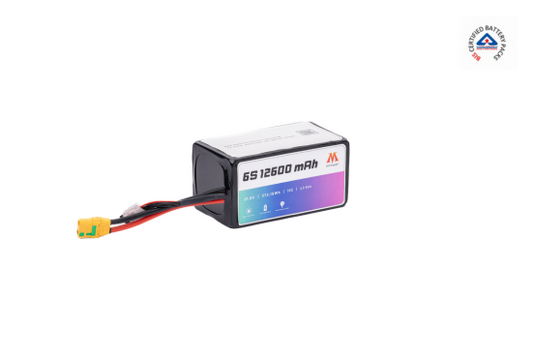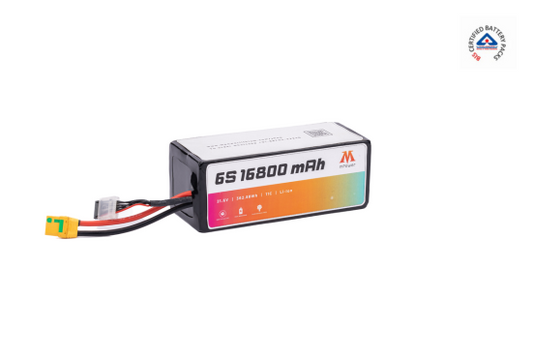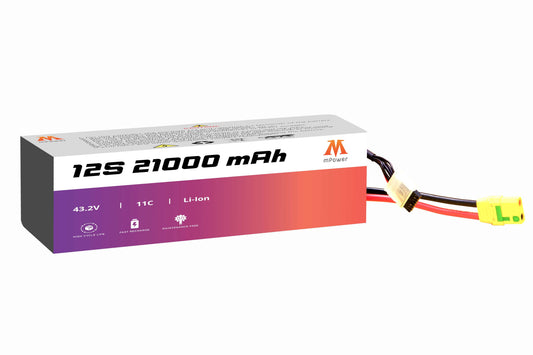
Not too long ago, seeing a drone in the sky felt like a peek into tomorrow. Now, they’re part of everyday life—flying over farms, checking bridges, mapping shores, even dropping off packages in busy streets. And behind all that? One small but strong piece of tech: the drone battery.
Unlike the flashy bodywork or the spinning propellers, the battery isn’t something most people notice. But ask any drone operator what keeps their machine in the air, and they’ll point straight to it. How these drone batteries evolve in the next few years will decide how far Indian skies stretch for drones.
This isn’t just another piece of tech news. It’s a turning point for how India builds, powers, and sustains its growing drone economy.
1. Packing More Energy, Shedding More Weight
Drone pilots always have to make a choice: use a big battery and fly shorter, or go with a light one and run out of juice fast. It’s a constant juggle. But new battery tech is trying to fix this—packing in more energy without adding weight.
Picture a farmer in Vidarbha or Punjab, flying a drone to spray crops. If that drone had a battery just 30% stronger, it could almost double the area it covers in one go—no landing, no swapping batteries. That’s not just convenience — it’s time saved, cost saved, and efficiency gained.
This is where manufacturers like mPower batteries are gaining ground. They’ve been working on higher energy density cells that make longer flights possible without burdening the drone. It’s a quiet kind of progress, but it changes everything in the real world.
2. Solid-State Chemistry Slowly Taking Flight
Lithium-ion batteries have served well, but anyone who has handled one knows their limits. Drone batteries aren’t perfect. They negate big temperature changes, heat up quickly, and get weaker the more you use them. But there’s a new kind on the horizon: solid-state batteries. They run cooler, last longer, and store more power in a smaller size. Plus, they’re a lot safer.
In India’s scorching summers and humid monsoons, that stability is worth a lot. Brands exploring solid-state tech for drones could set new flight-time records. mPower batteries has already started aligning its lineup with this shift, hinting at how made in India drone batteries might look in the next few years — more durable, safer, and designed for our climate rather than imported for someone else’s.
3. Swappable Packs and Smarter Management
If you’ve ever flown a drone for hours, you know the pain—waiting around for the battery to charge. Now picture this: the drone lands, the dead battery pops out, a charged one clicks in, and it’s back in the air in under a minute. No waiting, no fuss. That’s where things are headed—batteries you can swap out fast, like changing a flashlight.
This isn’t science fiction. Swapping batteries will become as normal as refueling a bike. Add to that smart battery management systems that track charge levels, health, and heat in real time, and operators won’t be guessing anymore. A smart drone battery is like having a technician inside every pack, quietly monitoring everything.
4. The Race to Faster Charging
Drone operations thrive on time. When a fleet has to wait hours for charging, that time becomes expensive. Faster charging isn’t a luxury — it’s a competitive edge.
Future battery packs are expected to handle higher current without wearing out faster. But to make that work, India will also need a reliable network of smart charging hubs. Picture a field station where batteries are charged in under 20 minutes, swapped out, and the drones take off again. That’s what efficient operations could look like across agriculture, logistics, and security.
5. A Second Life After the Skies
Here’s a side of the drone industry not many talk about: battery waste. When thousands of drone fleets operate every day, the number of retired battery packs piles up quickly.
This is why recycling and second-life applications are no longer an afterthought. Spent drone batteries still hold enough energy to power backup systems or stationary storage solutions. Brands investing in recycling loops will build stronger reputations and longer-term value. It’s not just an environmental move — it’s smart business.
6. Certifications Become a Trust Marker
Ask any professional drone operator what they value most apart from performance, and you’ll likely hear “safety.” Certification — whether BIS, global safety marks, or thermal stability standards — will soon become a baseline, not an afterthought.
When a drone battery is built to meet safety rules from day one, a lot of things get easier. It’s safer in the sky, simpler to insure, quicker to buy, and smoother to manage in big fleets. And for Indian makers trying to go global, it helps them compete without playing catch-up.
7. Made in India Takes Center Stage
For years, imported batteries dominated the drone ecosystem here. But depending on foreign suppliers for something this critical can be risky. Local manufacturing offers better control, quicker supply, and custom engineering for Indian operating conditions.
mPower batteries is one of the brands leading this transition with made in India drone batteries, tailored for domestic operators. Beyond just cost savings, this also creates jobs, builds technical capability, and strengthens supply chain resilience. The future of India’s drone ecosystem will be written at home, not shipped in from elsewhere.
8. Intelligence Joins the Battery Pack
The next generation of drones won’t see their batteries as dumb energy bricks. Fleet management systems will talk to each battery, pulling data on charge cycles, predicted failures, and optimal charging windows.
This intelligence can prevent expensive downtime and make large-scale operations smoother. An AI-assisted dashboard that flags weak batteries before they fail is more than a convenience — it’s operational security.
9. Designed for Real Indian Conditions
Drone operations in India are nothing like flying in calm, cool environments. High humidity in Kerala, blazing heat in Rajasthan, and dust in Madhya Pradesh present challenges that imported battery packs don’t always handle well.
Future designs will need to be tougher — more resistant to temperature spikes, moisture ingress, and long working days. Locally designed batteries will have the advantage here because they’re made with these realities in mind.
10. A Market That Moves Fast
India’s drone sector isn’t just growing — it’s sprinting. From mapping railway corridors to monitoring crop cycles, the use cases are multiplying every season. A power system that can’t keep up will quickly become irrelevant.
The next few years will favor manufacturers who can adapt fast: lighter packs, smarter monitoring, faster charging, and sustainable recycling. In many ways, battery technology will be the quiet engine behind India’s drone revolution.
A Closing Thought
The future of drone batteries in India isn’t about one shiny breakthrough. It’s about a slow, steady layering of better ideas — energy density, modularity, intelligence, sustainability, and local strength. As the sky gets busier, the power behind the propellers will separate leaders from laggards.
mPower batteries is proving that India can build top-notch drone batteries right at home. We are not just pushing new tech—we’re laying the groundwork for a drone world that doesn’t have to rely on anyone else. It’s innovation, yes, but it’s also about standing on our own feet.
And when the drone of tomorrow takes off, its silent companion — the battery — will be what carries it farther than ever before.












